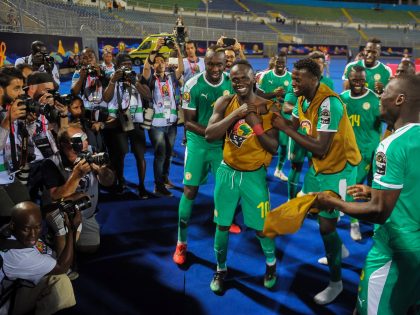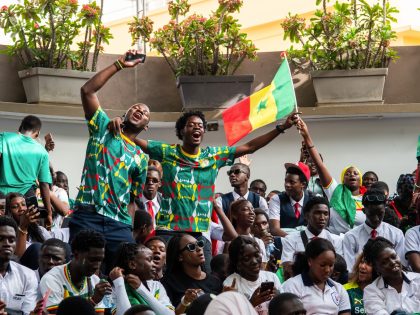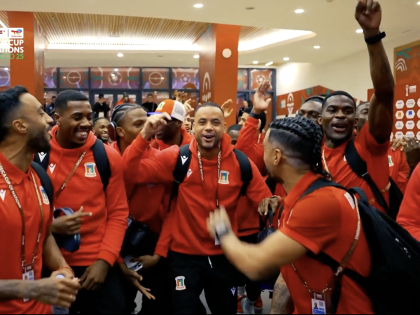To hear musicians breathe
An ode to The Mahogany Room, the pre-eminent live jazz venue in Cape Town, South Africa.

All photos: Tseliso Monaheng, unless indicated.
In just under a year, 79 Buitenkant Street in central Cape Town (around the corner from the country’s Parliament) has become an address synonymous with hosting the best jazz events in South Africa. It’s also home to the The Mahogany Room. Currently, offering live jazz Wednesdays through Saturdays, the venue is somewhat of a mecca for jazz heads seeking a bit more engagement with their beloved music. With a seated capacity of about fifty, The Mahogany Room has consistently served up copious amounts of musical excellence, with one event upstaging the next on the rail-road to jazz supremacy.
I have been fortunate to attend my fair share of shows at the venue. Often-times, I find myself hard-pressed to write my feelings down while the music lacerates my conscience. What follows are thoughts that went through my head as pianist Afrika Mkhize evoked roars amongst patrons of what is supposed to be a ‘quiet, seated venue’; my feelings when Mark Fransman’s chair lit an invisible fire under him, forcing him to jump ceaselessly across its width. This is what went through my mind as Kesivan Naidoo, eyes open wide and gazing into a distant future, performed a creation myth using only his drumsticks, beating life into his drumkit in the process.
The audience, feeling short-charged with merely clapping, shouts ‘yeah’ and ‘ooh’ in approval, along with muted sounds of approval which provide the perfect pretext for this communal gathering. Jazz is indeed for the masses, and the masses are consumed by this experience.
The next tune is called “Xenza,” an homage to the people of the Eastern Cape. The swiveling double bass precedes what is sounding like a gargantuan manifestation which belies the tiny, choking confines of time and space. I am taken back to Zim Ngqawana … — the unfamiliarity of it all, and how I grew to appreciate its place in the music. It morphs into a piano-bass battle akin to Westerns or Kung-fu flicks. Then Buddy Wells’s horn slides in; he has a knack for taking his time, searching for the right groove, letting it linger before he goes in for the kill. Mkhize is like a modern-day Monk in that mouthing thing that he does. He is uneasy, hitting hi-brow and low-tide, unleashing hours of practice with impeccable excellence. He talks to the piano — it could be the wine taking effect. Either way, he is a marvel, a dizzying cross between the late Moses Molelekwa and Monk; head-jerking motions, and a momentary brow-wipe with the left hand while the right performs its dutiful construction. Listen to the percussive passage of Naidoo, its Willie Bobo-esque exquisiteness. It’s only him and Wells now. Wells completes his part, then motions towards Mkhize. Mkhize, eyes closed, head in another dimension, gives the music time to get ingested before proceeding to rumbunctiously punch the keys in a free-form approach. Listen to that staccato thing he does, this man is fierce. Look at his contorted face, hear how the up-and-down-scale flourishes sound from the vantage point of the listener. Respect the architects, and acknowledge the reference he’s just made to Trane’s “Love supreme.”

Kesivan Naidoo, the trenchcoat over-bearer, lord of cymbals, master of the beat and purger of demons, with a hat to match. “It is the look that counts,” said an uncredited source now blown away into the annals of time. It is the look exhibited by soloists navigating the subtext of their musical terrain, transporting on-lookers into depths of the unknown. That same look refuses to name nor contain that space, but rather allows the on-looker to provide his/her own interpretation.

Lwando Gogwana and Sisonke Xonti, the Dizzy and Bird of South African jazz, foundation-keepers with a forward-thinking frame of mind. Thandi Ntuli, madame extraordinaire of rhythm, occupies her spot at the piano. Moses stretches forth his hand during her solo, immersing her already-capable hands int o a maze of amazing condiments, leaving a beleaguered set of on-lookers in her wake.
“Ukuz’khangela”: finding oneself, the balance between the imagined, scripted, and an escape from the framed, directed. Bossa Nova goes to Mdantsane, ruminates with the legends: Stompi Mavi, Ezra Ngcukana — the influencers of those who influence. Listen to that bass, pay close attention to what it is doing; listen to the scales, acknowledge them, but transcend. What we have here is not just an amalgamation of notes, but an interplay between the emotive and the metaphysical. These musicians are giving birth on-stage, de- constructing conventional wisdom, migrating into the domain of free-thinkers who are also doers. Doers free-thinking, paving the way to free-doing? Freedom?
“Yakhal’inkomo”: an intermittent intervention of Winston the Great. Ngozi, your presence is sorely missed. See what Lwanda’s doing on his horn, hear what Xonti’s doing on his? That is all for you Bra Winston, to let you know that, though you are reported to have been ‘humble’ and ‘rarely gave interviews’, there clearly was no need to, for your music spoke — and continues to speak — on your behalf.

Benjamin Jephta holds his iPhone in hand to help him tune his upright bass. It is a mere glimpse into the changing times in jazz music. Mark Fransman, bandleader supreme, scurries about the room looking for the perfect spot for his camera to capture the show — so tired, it seems, have jazz musicians become of other people’s (mis)representation of them that they have taken matters into their own hands, charted their course so to say.

To see musicians up-close, to witness their musical cues, to hear them breathe …this is the greatest advantage of the Mahogany. The feeling of being a part of a bigger whole, of being included in an inner circle of melody, rhythm, and groove. Being part of the universal whole; this is what it’s all about. I may have missed Bra Hugh and Larry Willis’s performance; Kyle Shepherd was launching his album on the other side of town when Soweto Kinch performed; and life had other plans for me when Tutu Puoane came to town and did a three-day residency. It still doesn’t sit well with me that I missed Shepherd’s special collaboration with avant-garde jazz drummer Louis Moholo-Moholo, but it surely has been one hell of a year.



















